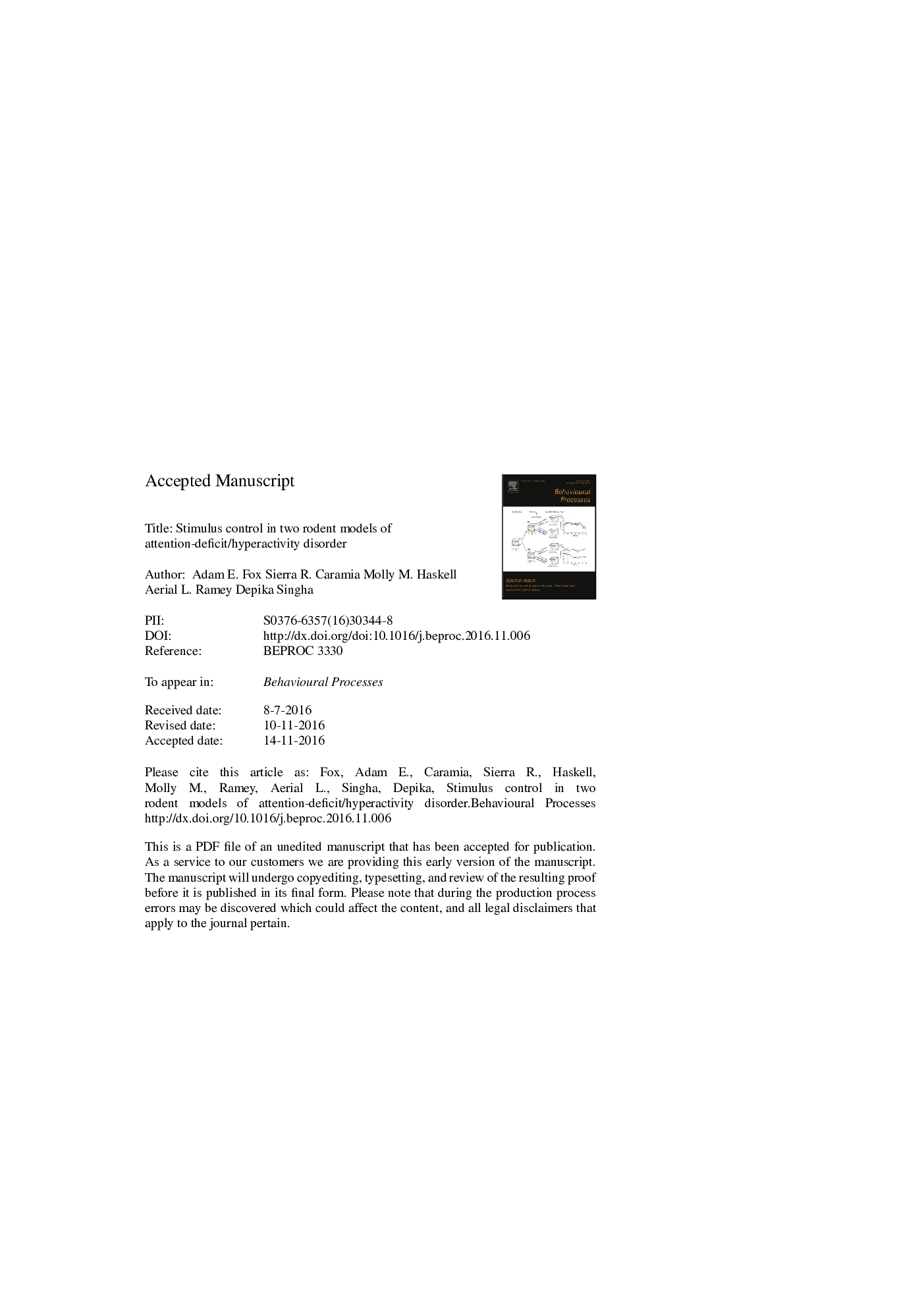| Article ID | Journal | Published Year | Pages | File Type |
|---|---|---|---|---|
| 5539693 | Behavioural Processes | 2017 | 39 Pages |
Abstract
The spontaneously hypertensive (SHR/NCrl) rat from Charles River is one of the most widely used models of the combined subtype of Attention-Deficit/Hyperactivity Disorder (ADHD-C). Although often used as its control strain, the Wistar Kyoto (WKY/NCrl) from Charles River has been proposed as a model of the predominately inattentive subtype of ADHD (ADHD-PI). In Experiment 1 SHR/NCrl, WKY/NCrl, and Wistar (WI; the progenitor strain for the two models) rats were trained on a left â right lever-press sequence in the presence of light discriminative stimuli that signaled the active lever in the sequence. In subsequent conditions the discriminative light cues were removed or reversed. WKY/NCrl accuracy remained relatively stable across cue light transitions. SHR/NCrl and WI accuracy was more disrupted when light cues were removed or reversed-an indication that behavior of the WKY/NCrl rats may not have come under control of the discriminative light cues as it did for the other strains, but relied more on past behavior and spatial cues. In Experiment 2, all three strains were exposed to a response-initiated fixed-interval (RIFI) 8-s schedule of reinforcement. In RIFI schedules behavior must be timed from a past instance of the target response. Replicating previous work, timing during the FI was roughly equivalent across the three strains; however, latencies to initiate the FI were significantly longer for SHR/NCrl than WKY/NCrl and WI rats, suggesting SHR/NCrl behavior was less sensitive to the first-response:food contingency in the RIFI schedule. These findings identify differences in stimulus control between the three strains and may help determine the efficacy of SHR/NCrl and WKY/NCrl as models of ADHD subtypes in humans.
Keywords
Related Topics
Life Sciences
Agricultural and Biological Sciences
Animal Science and Zoology
Authors
Adam E. Fox, Sierra R. Caramia, Molly M. Haskell, Aerial L. Ramey, Depika Singha,
